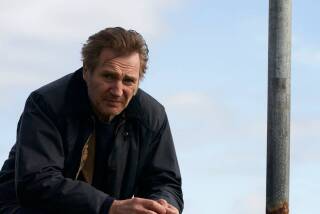Author Treks Along The War-Torn Border Between North And South : Agonies and Ironies of Divided Ireland Become Clear to Hiker
- Share via
BALLYCONNELL, Ireland — The border between British-ruled Northern Ireland and the Irish Republic runs right through the sofa in Felix Murray’s kitchen.
Felix and his two brothers, juggling their status to get good value, buy their dog license in the south, their television permit in the north.
Some of the cottage bedrooms are--south of the border, others north. Both mailmen visit.
But there are some disadvantages. “They cannot stand all the media and the tourist buses who come by,” said one of the Murrays’ recent callers, Dublin journalist Colin Toibin, who visited while writing a book called “Walking Along the Border.”
For Toibin, his three-month hike along the border highlighted the ironies and the agonies of an island divided by Britain in 1921 and darkened by the blood of sectarian and political conflict ever since.
Toibin, recalling one of the few light moments in his trek along a disaster-strewn frontier, said recently that the Murrays’ bilateral border bungalow “struck me as delightfully funny. They have American tourists taking pictures outside, laughing with one foot in the north, one in the south.”
The book inevitably concentrates on the fallout from the bitter conflict that has taken 2,600 lives in 18 years as Irish nationalist guerrillas fight to oust the British from the north.
The Murrays’ bungalow is 10 miles from Enniskillen, where the Irish Republican Army (IRA) planted a bomb on Nov. 8 which ripped through a war memorial ceremony, killing 11 people.
Toibin often returned to Enniskillen during his trek. “It is the loveliest town in the border area with great pubs and good restaurants. Amid all the gloom I met along the way, I would return to Enniskillen to refresh myself.”
Police and troops on both sides of the zigzagging border, honeycombed with up to 500 country lanes as crossing points, kept a wary eye on Toibin as he walked along the ramshackle frontier where the north’s tragedy is played out every day.
In the little Northern Ireland town of Castlederg, scene of six murders and 40 bombings in the past two years, a local Protestant councilor told him, “We see no light at the end of the tunnel. We see nothing, only darkness.”
The bleak, gaunt and rain-lashed landscape was matched by the despairing mood of so many people he met on both sides.
In the village of Clontibret in the Irish Republic, one old man reflected sadly, “When loves goes out of a place, there’s nothing left. The young people are all brought up on bombs and guns.”
Toibin came across some of the more gruesome milestones in the 18-year-old conflict, meeting the only two survivors of a 1976 sectarian massacre when 10 Protestants were gunned down in a bus returning from work.
The survivors were a Roman Catholic, told to run away by masked gunmen, and Protestant Alan Black who was injured but not fatally.
Now living alongside the children of his slain work mates, Black makes an annual pilgrimage to the scene of the slaying. He told Toibin with a shudder, “It’s a terrible place really. Sadness doesn’t even begin to describe it.”
Toibin also attended service at the Darkley Pentecostal Church where Irish guerrillas burst in on the congregation in 1983, mowing down three parishioners.
The pastor, who received almost 8,000 letters of support from around the world, chose for Toibin’s visit the same hymn they were singing when the gunmen burst in:
“Have you been to Jesus for the cleansing power?”
“Are you washed in the blood of the lamb?”
In his cross-country pilgrimage, Toibin was also swept into a gas bomb-throwing riot in Londonderry and had Northern Ireland border police pointing rifles as they frisked him.
But the border never ceased to have its absurdities for Toibin because “it was always zigzagging through deserted fields. There were two constants on my trip--the rain and always asking whether I was in the north or south.”
Now, reflecting back on the walk that was followed after only a few months by the carnage of Enniskillen, Toibin concluded, “That was a very sad event but will not change the way the IRA operates. It is not going to be a turning point or a milestone. That’s what makes it all the sadder.”
More to Read
Sign up for our Book Club newsletter
Get the latest news, events and more from the Los Angeles Times Book Club, and help us get L.A. reading and talking.
You may occasionally receive promotional content from the Los Angeles Times.








